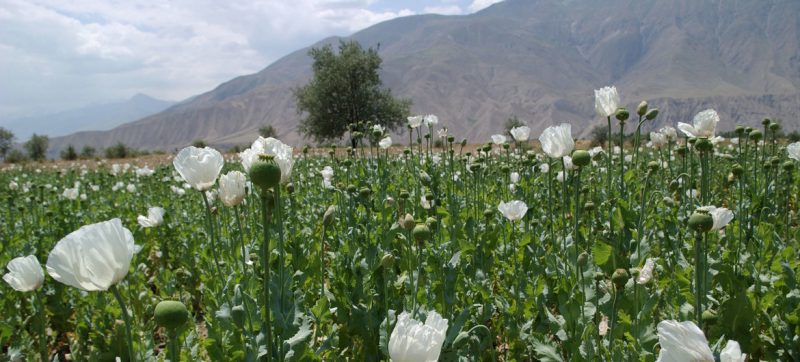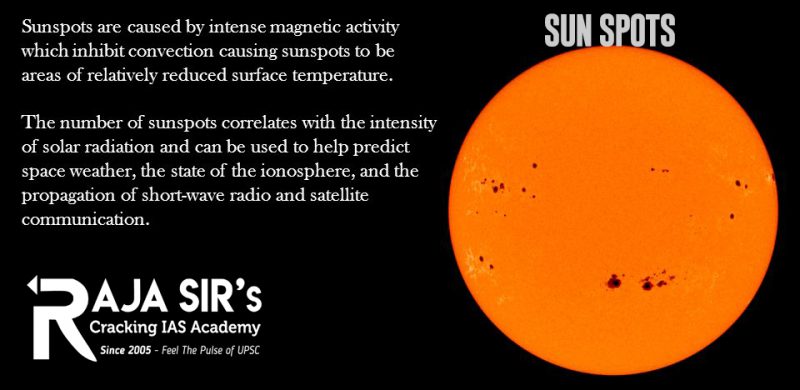- Home
- Prelims
- Mains
- Current Affairs
- Study Materials
- Test Series
Daily Current Affairs | 26th June 2020
COVID-19’s far reaching impact on global drug abuse
The new coronavirus pandemic could hit drug markets just as the 2008 economic crisis did, exacerbating the risks for users, the UN drugs and crime agency warned on 25 June 2020. In its 2020 World Drug Report, the agency predicted an overall increase in drug use due to the pandemic, with a shift towards consuming cheaper products and injecting them, which carries greater risks. Countries were also likely to reduce drug-related budgets, it warned. They might also give less priority to interception operations and international cooperation, which would make it easier for traffickers to operate.
 NASA - Ten Years in the Life of the Sun, Up Close and Personal
For ten years now, NASA ‘s Solar Dynamics Observatory (SDO) has kept its eye on the Sun. The SDO stored as many as 425 million high-resolution images of the Sun that account for 20 million gigabytes of data over the past 10 years. The SDO ‘s focus on circling our world has been on only one goal– finding out how solar activity forms the broader solar system. All its efforts have brought together a mesmerizing time-lapse video, one photo per hour of each of the preceding ten years.
NASA - Ten Years in the Life of the Sun, Up Close and Personal
For ten years now, NASA ‘s Solar Dynamics Observatory (SDO) has kept its eye on the Sun. The SDO stored as many as 425 million high-resolution images of the Sun that account for 20 million gigabytes of data over the past 10 years. The SDO ‘s focus on circling our world has been on only one goal– finding out how solar activity forms the broader solar system. All its efforts have brought together a mesmerizing time-lapse video, one photo per hour of each of the preceding ten years.
 Japan Decided to Scrap a Key U.S. Missile Defense System
Japan's National Security Council has endorsed plans to cancel the deployment of two costly land-based U.S. missile defense systems aimed at bolstering the country's capability against threats from North Korea, the country's defense minister said 25 June 2020. The council made its decision on24 June2020, and now the government will need to enter negotiations with the U.S. about what to do with payments and the purchase contract already made for the Aegis Ashore systems.
Japan Decided to Scrap a Key U.S. Missile Defense System
Japan's National Security Council has endorsed plans to cancel the deployment of two costly land-based U.S. missile defense systems aimed at bolstering the country's capability against threats from North Korea, the country's defense minister said 25 June 2020. The council made its decision on24 June2020, and now the government will need to enter negotiations with the U.S. about what to do with payments and the purchase contract already made for the Aegis Ashore systems.
 Australia, New Zealand chosen to co-host 2023 Women’s World Cup
Australia and New Zealand will co-host the 2023 Women's World Cup. The island neighbors beat Colombia 22-13 on 25 June 2020 in a vote by the FIFA Council. The expanded 32-team tournament - eight more than the 2019 edition in France - is expected to open in July 2023. The winning bid proposed 12 cities with seven in Australia and five in New Zealand. It includes the main stadium used for the 2000 Sydney Olympics.
Australia, New Zealand chosen to co-host 2023 Women’s World Cup
Australia and New Zealand will co-host the 2023 Women's World Cup. The island neighbors beat Colombia 22-13 on 25 June 2020 in a vote by the FIFA Council. The expanded 32-team tournament - eight more than the 2019 edition in France - is expected to open in July 2023. The winning bid proposed 12 cities with seven in Australia and five in New Zealand. It includes the main stadium used for the 2000 Sydney Olympics.
- Rising unemployment and a lack of opportunities would increase the chances that "poor and disadvantaged people... turn to illicit activities linked to drugs -- either production or transport".
- The COVID-19 crisis and economic downturn threaten to compound drug dangers further still, when our health and social systems have been brought to the brink and our societies are struggling to cope, said UNODC Executive Director Ghada Waly.
- The Vienna-based agency said it had reached its conclusions based on what had happened in the wake of the 2008 economic crisis.
- Drug shipments by sea - Border closures and other measures linked to the pandemic have already caused shortages of drugs on the street, leading to higher prices and reduced purity.
- Drug traffickers seemed to rely more on maritime routes, such as direct cocaine shipments by sea from South America to Europe.
- Online trafficking via the darknet, which offers users total anonymity, and shipments by mail might also increase.
- Drug consumption overall is already on the rise, especially in developing countries.
- While in 2009 an estimated 210 million people worldwide used drugs at least once, in 2018 that figure was closer to 269 million -- or 5.3 percent of the global population.
- The report, which mostly examined data up to early 2019, also noted that use of cocaine and methamphetamine was rising, with the methamphetamine markets in Afghanistan and Iraq growing.
- Global cocaine production again reached an all-time high, continuing its record-setting trend.
- Cannabis remains the most widely used drug worldwide with an estimated 192 million users in 2018. But opioids, used by around 58 million people, remained the most harmful.
POPPY FIELD
 NASA - Ten Years in the Life of the Sun, Up Close and Personal
For ten years now, NASA ‘s Solar Dynamics Observatory (SDO) has kept its eye on the Sun. The SDO stored as many as 425 million high-resolution images of the Sun that account for 20 million gigabytes of data over the past 10 years. The SDO ‘s focus on circling our world has been on only one goal– finding out how solar activity forms the broader solar system. All its efforts have brought together a mesmerizing time-lapse video, one photo per hour of each of the preceding ten years.
NASA - Ten Years in the Life of the Sun, Up Close and Personal
For ten years now, NASA ‘s Solar Dynamics Observatory (SDO) has kept its eye on the Sun. The SDO stored as many as 425 million high-resolution images of the Sun that account for 20 million gigabytes of data over the past 10 years. The SDO ‘s focus on circling our world has been on only one goal– finding out how solar activity forms the broader solar system. All its efforts have brought together a mesmerizing time-lapse video, one photo per hour of each of the preceding ten years.
- That’s almost the entire 11-year solar cycle of the Sun, and although it falls just short of that, it’s adequate to catch some of the most striking events we’ve seen. Giant plasma waves have also been sighted flying up to 3 million miles per hour around the star.
- The Solar Dynamics Observatory was launched on 11 February 2010 and is actually three instruments in one.
- There is the Extreme Ultraviolet Variability Experiment (EVE), which measures the Sun’s extreme ultraviolet irradiance, mainly responsible for heating the upper atmosphere on Earth and the Helioseismic and Magnetic Imager (HMI), which takes measurements of the Sun’s magnetic field in high resolution.
- That lets scientists understand how on the surface magnetic field and its behavior the physical processes occurring within the star manifest. Lastly, the Atmospheric Imaging Assembly (AIA) tracks the entire Sun’s disk through seven intense ultraviolet canals.
- For as long as the instruments are in working order the SDO can continue to observe.
- NASA has planned for another decade of observations of the Sun but for that, the SDO will be replaced by the latest Solar Orbiter, a joint NASA-European Space Agency mission.
- It will have an inclined orbit, making it easier to see the polar regions of the Sun, as the two missions will also be able to focus on 3D images of the star and beneath its surface structures.
 Japan Decided to Scrap a Key U.S. Missile Defense System
Japan's National Security Council has endorsed plans to cancel the deployment of two costly land-based U.S. missile defense systems aimed at bolstering the country's capability against threats from North Korea, the country's defense minister said 25 June 2020. The council made its decision on24 June2020, and now the government will need to enter negotiations with the U.S. about what to do with payments and the purchase contract already made for the Aegis Ashore systems.
Japan Decided to Scrap a Key U.S. Missile Defense System
Japan's National Security Council has endorsed plans to cancel the deployment of two costly land-based U.S. missile defense systems aimed at bolstering the country's capability against threats from North Korea, the country's defense minister said 25 June 2020. The council made its decision on24 June2020, and now the government will need to enter negotiations with the U.S. about what to do with payments and the purchase contract already made for the Aegis Ashore systems.
- The council is expected to also revise Japan's basic defense plan later this year to update the missile defense program and scale up the country's defense posture.
- Defense Minister Taro Kono announced the plan to scrap the systems earlier this month after it was found that the safety of one of the two planned host communities could not be ensured without a hardware redesign that would be too time consuming and costly.
- The Japanese government in 2017 approved adding the two Aegis Ashore systems to enhance the country's current defenses consisting of Aegis-equipped destroyers at sea and Patriot missiles on land.
- Defense officials have said the two Aegis Ashore units could cover Japan entirely from one station at Yamaguchi in the south and another at Akita in the north.
- The plan to deploy the two systems already had faced a series of setbacks, including questions about the selection of one of the sites, repeated cost estimate hikes that climbed to 450 billion yen ($4.1 billion) for their 30-year operation and maintenance, and safety concerns that led to local opposition.
- Prime Minister Shinzo Abe, who has steadily pushed to step up Japan's defense capability, said last week that in light of the scrapping the government would need to reconsider Japan's missile defense program and do more under the country's security alliance with the U.S.
- The government would consider the possibility of acquiring preemptive strike capability, a controversial plan that critics say would violate Japan's war-renouncing Constitution.
 Australia, New Zealand chosen to co-host 2023 Women’s World Cup
Australia and New Zealand will co-host the 2023 Women's World Cup. The island neighbors beat Colombia 22-13 on 25 June 2020 in a vote by the FIFA Council. The expanded 32-team tournament - eight more than the 2019 edition in France - is expected to open in July 2023. The winning bid proposed 12 cities with seven in Australia and five in New Zealand. It includes the main stadium used for the 2000 Sydney Olympics.
Australia, New Zealand chosen to co-host 2023 Women’s World Cup
Australia and New Zealand will co-host the 2023 Women's World Cup. The island neighbors beat Colombia 22-13 on 25 June 2020 in a vote by the FIFA Council. The expanded 32-team tournament - eight more than the 2019 edition in France - is expected to open in July 2023. The winning bid proposed 12 cities with seven in Australia and five in New Zealand. It includes the main stadium used for the 2000 Sydney Olympics.
- After a successful World Cup last year, FIFA wants the next women's tournament to further establish its independence from the men, and show it is commercially attractive.
- At least $100 million is expected to be paid by the governing body in 2023 - for prize money, team preparation costs and to clubs releasing players for the tournament - FIFA president Gianni Infantino pledged last year in France.
- Colombia's bid was rated a high-risk commercial option in an evaluation of the candidates published this month. Australia and New Zealand's bid was rated low-risk and scored 4.1 points out of a maximum 5. Colombia scored 2.8.
- A third candidate, Japan, withdrew on 22 June 2020. That gave fellow Asian Football Confederation member Australia a clearer run. New Zealand is part of the smaller Oceania continental group.
- The 2023 tournament will be the first time a World Cup for men or women will be shared across two continental bodies, and the first co-hosted women's edition.
- Colombia's bid was supported by most of the nine voters from European soccer body UEFA.
- Launched in 1991, the Women's World Cup has never been hosted in South America.
- Both Australia, the No. 7-ranked team in women's soccer, and No. 23 New Zealand will qualify automatically for the tournament.
- Colombia is currently ranked No. 25 and was the only one of the three bidders not to qualify for the 2019 edition.









 Latest News
Latest News
 General Studies
General Studies